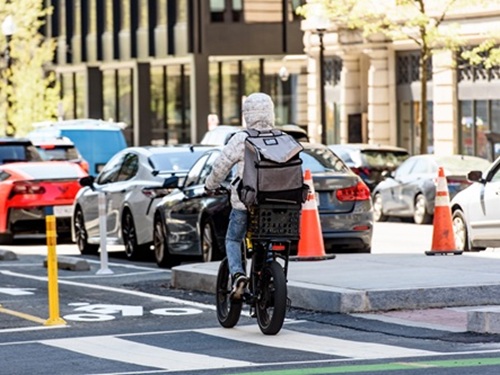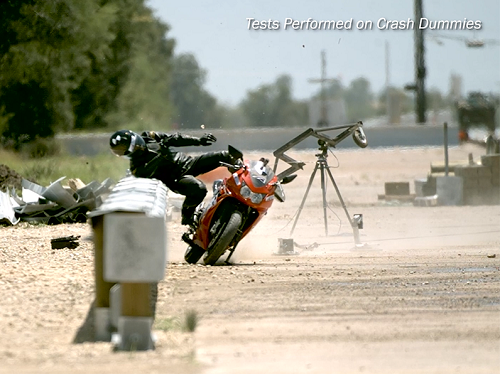The Texas Department of Transportation recently wrapped up a five-year project with the Texas A&M Transportation Institute to upgrade the design of roadside guardrails in order to improve safety for motorcyclists.
[Above photo by TxDOT]
The agency noted that the number of motorcyclist deaths in Texas has increased every year since 2020, so it has been looking into some of the factors causing severe injuries during motorcycle crashes. One contributing factor is guardrails, TxDOT found, as those barriers – while designed to help improve overall roadway safety – can act as a blunt force object for motorcyclists if riders hit a guardrail in a crash or spin-out.
The agency said TxDOT researchers noticed a consistent correlation between the number of barrier-related motorcycle fatality increases and the total number of motorcycle riders increasing over time. In addition, statistics show more fatal motorcycle-guardrail collisions than car-guardrail collisions.
From that starting point, TxDOT and Texas A&M began working on a guardrail design that is both safer for motorcyclists in the event of a crash and one that can be retrofitted onto existing guardrails.
TxDOT noted that this new standard is currently in development and anticipated to be released later in 2024.
That new design will also be recommended in areas with higher-than-normal motorcycle traffic, areas with a history of roadside departure motorcycle crashes and roads that systemically would be more prone to have motorcycle crashes, like roads with tight curves.
Nathan Schulz, a Texas A&M research scientist, said the two main components of the retrofit design are a protective cap rail over the top that eliminates sharp edges, and a rub rail along the bottom of the guardrail to keep motorcyclists from hitting a post or sliding past the rail into another hazard.
With the new guardrail design, motorcyclists will be more likely to slide along the top of the rail or along the side of the road, which can help eliminate blunt force trauma impacts, lacerations and spinal injuries.
“This is a safe way to capture and contain motorcycle riders and reduce the potential of serious injury for them,” Schulz explained in a statement. “At the same time, it’s not negating safety for passenger vehicles.”
Schulz added that sensitivity of the head and neck was an imperative consideration in the design of the rub rail. Because these parts of the body are so fragile, the design concepts and configuration options were more limited than originally expected when going into the research.
“We know motorcycle riders are a smaller part of the driving population, but we’re seeing that they’re one of the higher ones as far as fatalities when impacting safety barriers,” Schulz said.
According to Ken Mora, TxDOT roadway standards and research lead, the research at Texas A&M considered many variables, including the factors that may cause motorcyclists to leave the roadway more easily.
“We’re going to be providing some of this guidance in our roadway design manual and will be releasing a motorcycle rub rail standard,” he noted. “The guidance will include locations where the rub rail should be considered for use and other countermeasures that will hopefully reduce the number of motorcyclists who might leave the roadway and hit a metal beam guard fence.”
 States
States
Washington D.C. Launches E-Bike Food Delivery Pilot
July 18, 2025 States
States

